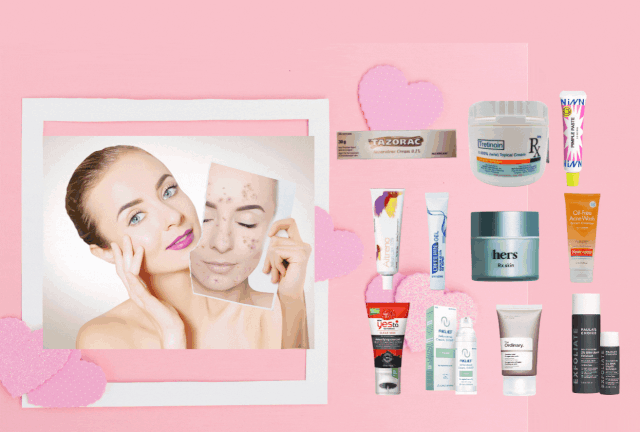How to Hold Boundaries with Skill and Care
Setting and holding boundaries can be challenging, even if you’re not a people-pleaser. The key is communicating clearly to cut down on conflict and increase freedom—for those on both sides of the line. The post How to Hold Boundaries...

Early in my recovery from addiction, I attended the wedding of an old friend I hadn’t seen in a long time. I arrived at the event alone and was standing by the bar when an ex-boyfriend’s new girlfriend, who I had only met once before, approached me. She noticed I was sipping water, and it seemed to really bother her that I wasn’t indulging. She said hello, then immediately launched into, “Why aren’t you drinking tonight?” She didn’t know I was in recovery and I wasn’t comfortable sharing, so I just said I was good with water and that I liked her dress, thinking that would be the end of it.
It wasn’t.
Later we found ourselves in a group together, and she “jokingly” asked why I was being such a prude. At that point, I realized she was already pretty tipsy (as was most everybody), and this situation was starting to feel like a threat to my recovery. I didn’t think I’d give in, but I didn’t feel safe, and it didn’t feel healthy for me to continue to engage with her. For whatever reason, my mind flashed to the Homeland Security Advisory System—you know, their “threat level” colors—and I began mentally evaluating where I thought we were. Threat Level Green? Oof, we’re past that already. I tried to laugh and change the subject an hour ago, but that didn’t work. We’re clearly at Threat Level Yellow now—she’s getting pretty drunk, and emboldened by the presence of her friends. In the moment, I said something dismissive like, “I just don’t feel like drinking tonight,” and left to talk to someone else. But I was on higher alert now, anticipating this wouldn’t be the end of it.
Sure enough, a few minutes later, the woman approached me again—this time with my ex in tow (who at least had the decency to look embarrassed) and two shots in hand, insisting I do one with her. This is Threat Level Red, Melissa, I thought to myself. If she doesn’t chill out, I’m going to have to leave. I don’t want to feel pressured to share my recovery status with a room full of strangers—or worse, take a drink I don’t want. I again declined, threw a pointed look at my ex, and walked away.
I did my best to avoid the woman for the next hour or so, but the more everyone drank, the more she seemed to fixate on me, and I began feeling very alone in that room. By 10 p.m., she was seriously hammered, and I was at Threat Level Fuchsia—which Homeland Security does not recognize, but anyone who’s been in front of their ex’s current girlfriend after multiple tequila shots surely does. At that point, I knew there was only one thing I could do to keep myself safe: I grabbed my coat and walked out the door.
I recognized that different levels of threat—to your relationship with that person, your mental health, or your safety—require a different level of boundary response.
That experience is still so vivid in my head, not just because I went home and cried, but because the “threat level” system I used then carried into all of my boundary conversations going forward. Through that experience, I recognized that different levels of threat—to your relationship with that person, your mental health, or your safety—require a different level of boundary response. Just like you don’t use a flamethrower to kill a mosquito, I didn’t need to walk out of my friend’s wedding after the first hint of peer pressure. But several hours later, the threat to my health and safety (and my relationship with the bride and groom) was real. If I didn’t set the strongest boundary possible, I was afraid something irreparable was going to happen—I’d either blow up at this woman and start a fight, or give in and have a drink.
Set and Hold Boundaries
The Green, Yellow, and Red system was born from that experience, and represents the level of threat that stems from the boundary crossing you’re facing. The threat could be to your own health or safety, as it was for me at the wedding. If someone continues this behavior, is your mental health going to suffer? Are your health commitments at risk? Is it putting you in the way of physical or emotional harm?
The threat could also be to your relationship. If this behavior continues, is the good relationship you have with this person in jeopardy? Are you already feeling avoidant, anxious, or annoyed before you even interact? How close are you to exploding with resentment, frustration, or anger; saying something you can’t take back; or cutting off the relationship altogether?
If that threat is minimal at this point—their behavior is not OK, but it’s the first time it’s happened, or it’s not hugely harmful—you’re still in Green territory, and the language you use to establish or reinforce the boundary should acknowledge that. But if the threat to your relationship is imminent—as in, “If you mention my weight one more time, I’m walking out the door”—you’re in the Red, and your boundary language and the consequences should reflect that, too.
What’s the Threat Level?
GREEN: Low risk, and the gentlest language. Assumes the other person wasn’t aware they were overstepping and wants to respect your limits. Your boundary language is clear, generous, and very kind. Leaves any potential consequences unsaid in the spirit of good faith.
YELLOW: Elevated risk, and firmer language. Used as a follow-up if your Green boundary isn’t respected, or if historical interactions with this person indicate the threat is higher. Your boundary language is just as clear, but more firm. Yellow may also include an intended consequence, if appropriate.
RED: Severe risk, and your most direct language. At this point, your health, safety, and/or the relationship are in jeopardy, and your language must reflect the severity of the situation. It’s still kind, but this is their last reminder, and makes it clear that you are prepared to hold your limits. State the consequence plainly here and be ready to enforce it.
Minimum Dose, Maximum Effect
The best boundary uses the minimum dose for maximum effect. This is a physics principle first credited to Greek scientist and mathematician Archimedes, but it has been popularized in the modern fitness industry. It asks the question: What is the smallest action you can take to produce the desired effect?
The principle allows you to leverage your efforts to get the most bang for your buck—and prevents you from the negative consequences of thinking more is always better. If sets of five squats make you stronger, you don’t have to do ten. And when it comes to boundaries, how softly can you tread while still effectively establishing your limit?
If you start every boundary conversation with the firmest and most direct language, sure, the boundaries you set will be effective, but you’ll create more conflict than necessary, and probably burn some bridges along the way. Ideally, you’ll head into these conversations assuming the best, starting with Green and only escalating to Yellow or Red if you need to. If your Green boundary is successful, congratulations! You’ve spoken in the gentlest language possible (which your conversation partner certainly appreciates) and your limits have been acknowledged and respected.
However, take the concept of threat seriously. If you find that repeating your Green boundaries just isn’t working and the offending behavior continues to escalate, what’s a kinder response: saying nothing and ignoring the other person for a while, or speaking from a Yellow- or Red-level boundary clearly and setting the stern but necessary limit that could save the relationship?
Practice Makes Progress
One last piece of advice: Practice makes boundaries feel and sound far more natural, which means you’ll come across as more confident, and the boundary is more likely to be taken seriously. While I encourage you to adopt the specific language and words that feel the most natural for you, once you land on what you want to say, practice. Tell the mirror, “No thank you, I’m not drinking right now.” Tell your dog, “Wow, that’s a rather personal question. Let’s move on.” Tell your shower wall, “I’ve already left the office. Slack me tomorrow morning and I’ll help.”
Say it out loud until it feels easy and confident, so your brain and body get used to the idea that this is your space, and you have every right to protect it with clear, kind boundaries. And with that, I think we’re ready to build some fences.
Excerpted from The Book of Boundaries: Set the Limits That Will Set You Free by Melissa Urban. Copyright © 2022 Melissa Urban. Published by Penguin Canada, an imprint of Penguin Random House LLC. Reproduced by arrangement with the Publisher. All rights reserved.
The Power of Sustainable Self-Care
Shelly Tygielski explores how consistently showing up for yourself first lays the foundation for our life’s purpose—showing up for others—and how to create your own self-care practice.
Read More
“No” Is A Complete Sentence
“No” is a word most of us use too infrequently. And, what’s worse, when we say “No” we usually add on all sorts of wheedly explanations. But “No” is a complete sentence, and here’s why.
Read More

 AbJimroe
AbJimroe 
































